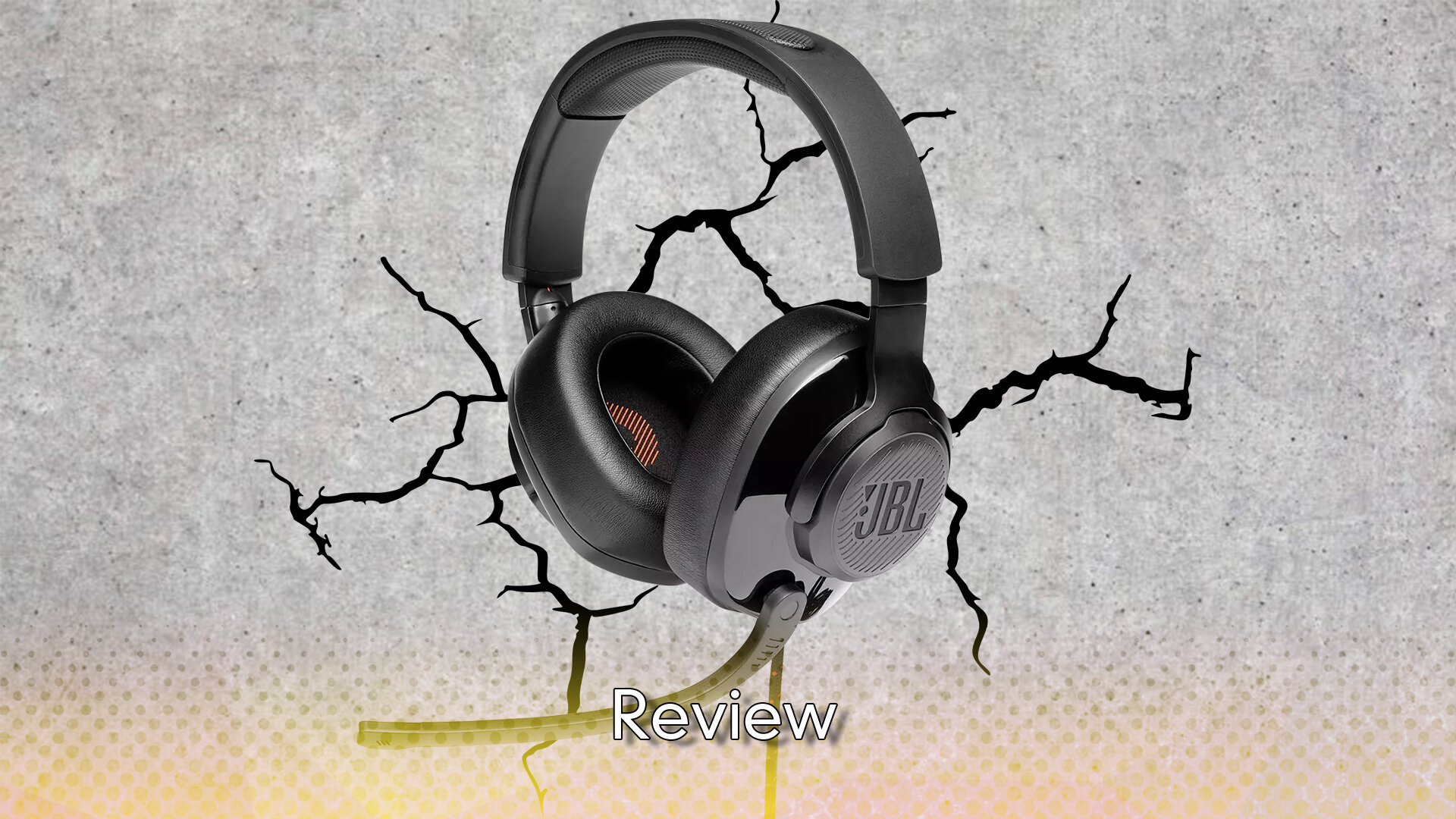JBL Quantum Stream Studio - Review

As a streamer, content creator, musician and any other person using a microphone to record and make content, it’s important that you have the right tools for the job. Microphones are an expensive upfront cost, and it’s important that you get the product that will do the job for you. Enter the JBL Quantum Stream Studio.
JBL is a brand more known for their quality headphones and audio monitoring equipment, with a range of price breaks to allow people of all economic backgrounds access to clean, crisp, and quality audio. Yet with an ever-growing audio market there is avenues in more than just headphones for them to be making their mark on. The JBL Quantum Stream Studio is an out of the box plug and play microphone designed to get you straight into your content creating space.
The Stream Studio comes out of the box as a tripod mounted microphone, with a USB-C to USB-A connection cable, allowing for easy plug and play. The power cable is generously long, a quick eyeballing puts it as 2.5 to 3m in length (the box doesn’t appear to say explicitly), meaning you won’t have to reshuffle your entire computer layout to enjoy your new microphone. The tripod it comes mounted on too is rather sturdy for something that feels so light. As a result, if you’re a heavy handed typer like myself you shouldn’t have any vibration issues accidentally moving the microphone.
The microphone claims to be a universal mount, but this should have a little bit of an asterisk attached to it. It does come with an adapter at the base that should fit most boom arms but won’t fit all. I currently use the Rode PSA1 and unfortunately the in-box adapter for the Stream Studio does not fit the 3/8” thread. Something relatively easily fixed with a thread adapter. For many this won’t matter, but for some it is something to consider when looking at boom arms if that is your preferred method of mounting.
What helps the JBL Quantum Stream Studio stand out among other more affordable microphone options is the controls on the microphone itself. A touch sensor mute button on the top of the microphone with a very clear red light around the top of the mic to indicate that it is muted. A volume control knob on the front which you can use to turn headphone volume up and down. A quick press of the volume knob will allow you to then change the gain level of the microphone and increase or decrease the volume of the mic itself. For those who are looking to use it for console gaming and direct console streams, this sort of quick touch control is incredibly useful.
There is a button on the bottom of the microphone that allows you to quickly change between voice pick-up patterns. Cardioid for solo, bi-directional for interview style recordings, stereo for a more couch podcast or co-op session and omnidirectional for that large group circle situation. Generally you won’t be changing between these patterns all that often, so the placement of the button isn’t too problematic. It is however directly underneath the mic, which is a somewhat awkward position, considering the accessibility of all the other control options.
A massive upside is the quality of the mic straight out of the box. Coming from the Shure MV7X, it was nice to have a mic that from the word go picks up and amplifies my voice straight away. Having dealt with XLR style setups for a while, the straight out of the box, no shenanigans style was a pleasant surprise. There was no need for additional gains on software as the mic audio is quite loud. Louder than a lot of microphones tend to be. The headphone jack in the back allowing you to get direct feedback on the loudness of the microphone too. If you’re not wanting to plug headphones directly into the mic, it also has a visual RGB VU meter on the control knob itself to give you an indication of the audio levels.
The mic does seem to lack and in-built pop filter. You can always makeshift a pop filter with a sock and an elastic band, but it is something to remember. Loud p’s and other popping sounds are going to do exactly that when recording. The mic whilst not being too tall or large, is quite round, so it makes be an awkward microphone to find a pop filter to fit perfectly. Again, minor issue for a microphone that does so many other things right.
For those who are JBL enthusiasts, particularly in the Quantum line of products, good news! The JBL Quantum Stream Studio perfectly pairs up with the Quantum Engine software, which allows you to have even more nuanced control of the microphone on PC. You can change the gain levels, the profiles, easily change between recording modes as well. The Quantum line of products integrating their control factors into the one piece of software is a smart direction for JBL to go.
All in all, the JBL Quantum Stream Studio is a fantastic microphone. It might not beat out higher end microphones, but for an entry level mic with a large range of utility, it’s hard to find another at a similar price point. More condensed and useful than other similarly priced microphones such as the Blue Yeti, with more software integration and easy of straight out of the box use. The Quantum Stream Studio is one for people just starting out in content creation and intermediate to advanced creators alike.
The Score
8.0
Review unit provided by JBL
The Pros
Great out of the box
Easy touch mute with visual indicator
Compact, not an eye sore
The Cons
Universal mount isn’t actually universal
Lack of a pop-filter
Noise Cancelling out of the box is a bit weak








